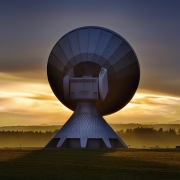Scientists develop low-voltage W-band millimeter-wave technology for the first time at 0.5 volts
According to EurekAlert, the science and technology news sharing platform of the American Association for the Advancement of Science (AAAS), Japanese scientists announced at the RF IC Forum in the United States that they have developed a low-energy millimeter-wave amplifier that is the first to achieve a W-band at a low voltage of 0.5 volts. (75 to 110 GHz) frequency is amplified.
The frequency range covered by the W-band is widely used in radar devices for automotive assisted driving and automatic driving systems. The millimeter-wave amplifier gives the radar a powerful scanning capability that allows the radar to distinguish between day and night in inclement weather conditions. But because this type of radar usually consists of an array of hundreds of transmitters and receivers, it must operate in a low-voltage power supply environment.

However, semiconductor performance will decrease at low voltages. The Hiroshima University researchers and Fujitsu Semiconductor Co., Ltd. (MIFS) have successfully built W-band amplifiers that maintain normal performance at 0.5 volts. Fujitsu’s silicon-based metal-oxide-semiconductor (MOS) and 55-nm complementary metal-oxide-semiconductor (CMOS) are capable of maintaining high performance at low voltages; Hiroshima University has further enhanced these semiconductors in millimeters through special technical design. Performance within the waveband.
Hiroshima University professor Fujishima Kang Nian said that their newly developed low-voltage W-band circuits have broad application prospects and can be applied to automotive radar devices, high-speed communication systems between base stations, and smartphones. For example, millimeter-wave radar can greatly enhance the perception of audio, visible light and the Earth’s magnetic field, and mobile phone users can even receive and respond to radar signals from friends’ mobile phones.
Fujishima Kang said that stable performance is another advantage of the new W-band amplifier. Previously developed 1 volt and above millimeter-wave circuits, performance can only last for a few days or even hours, its heat carrier effect will lead to a gradual decline in performance until it can not be used; and the new amplifier’s heat transfer effect is greatly reduced, the “visual” energy of automotive radar Keep it for years without falling.
Researchers say they will continue to research to further improve the performance of millimeter-wave amplifiers and even achieve lower-voltage millimeter-wave CMOS circuits.
From:http://www.hj-antenna.com/scientists-develop-low-voltage-w-band-millimeter-wave-technology-first-time-0-5-volts/




Leave a Reply
Want to join the discussion?Feel free to contribute!